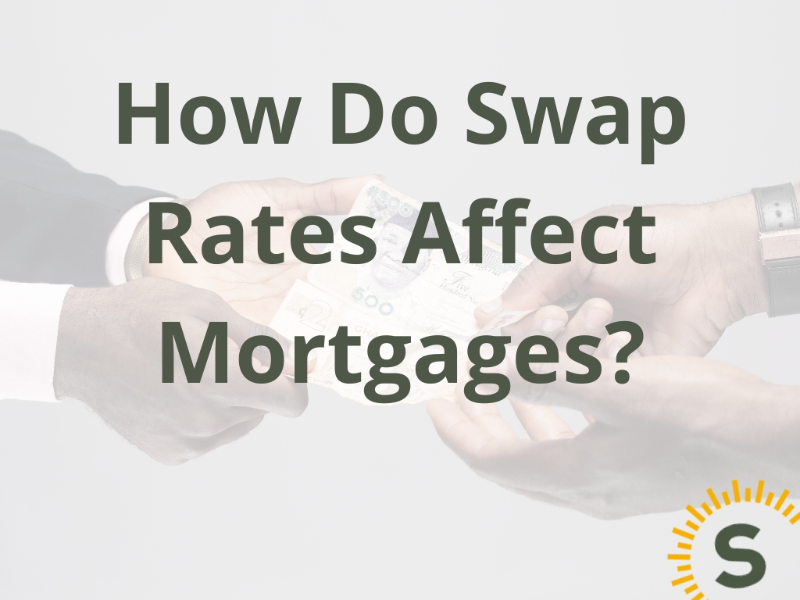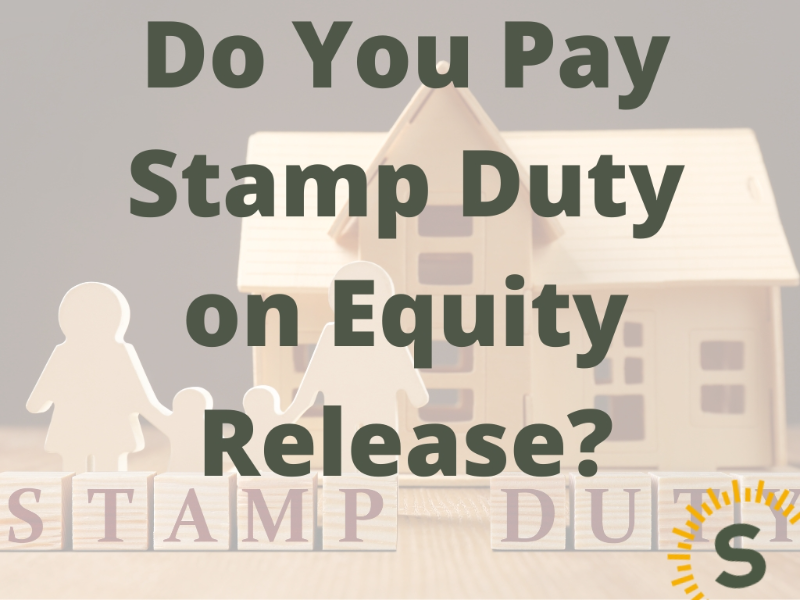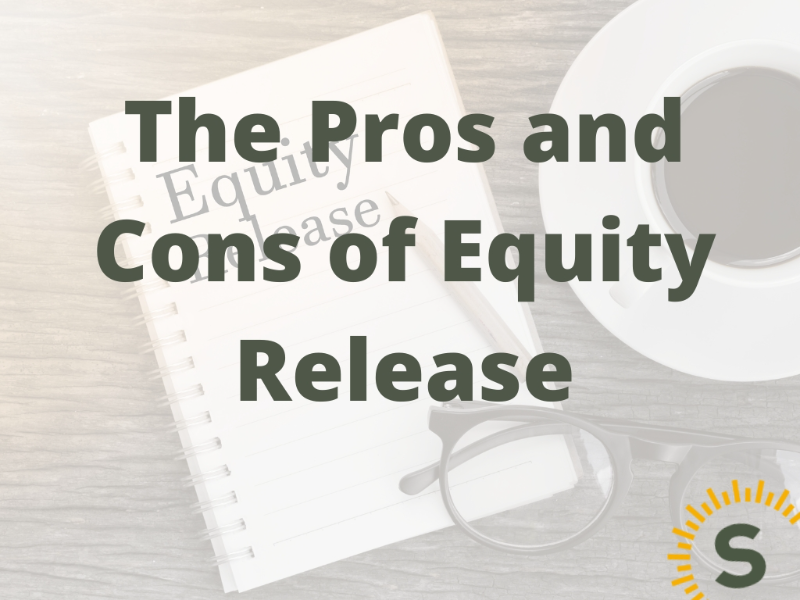
A home reversion plan is an equity-release scheme that allows you to sell a percentage of your home to release the money tied up in your home. It can be used for a lump-sum or an income.
Equity release is a popular way for homeowners to access additional funds in later life without having to sell their property. Equity release enables homeowners to access some of the value locked up in their homes, and there are two main ways to do this: through a lifetime mortgage or a home reversion plan.
This insight will focus on the less-common form of equity release: home reversion.
Home reversion plans are a less-common form of equity release that may be suitable for people over a certain age who want to access the value of their property without selling it outright. With a home reversion plan, you can sell a percentage of your property in exchange for a cash lump sum, a fixed income for the rest of your life, or a combination of both.
With the plan, you get to continue living in your home rent-free until you die or choose to sell the property, such as to move into long-term residential care.
If you have seen a significant increase in the value of your home since you purchased it and your current retirement income may not be enough to meet your needs now or in the future, then a home reversion plan may be worth considering
For example:
Let's say that you own a property worth £500,000, and you decide to enter into a home reversion plan. The provider of the plan agrees to purchase a percentage of your property, let's say 40%, in exchange for a lump sum payment. In this case, the lump sum payment would be £200,000 (40% of £500,000).
After the home reversion plan has been agreed, you are still able to live in your property for the rest of your life or until you sell it. You do not have to pay rent on the portion of the property that you have sold, as you retain the right to live in the property rent-free.
When you die or sell the property, the home reversion provider will receive their percentage of the proceeds from the sale. In this example, if the property is sold for £600,000, the provider would receive £240,000 (40% of £600,000), and you or your estate would receive the remaining amount.
It's important to note that the percentage of the property that you sell to the provider will depend on your age, the value of your property, and the provider's terms and conditions. Typically, the older you are, the higher the percentage you can sell. Additionally, the amount that you receive in exchange for selling a percentage of your property will depend on the percentage being sold, your age, and the value of your property.
A provider will offer to buy a percentage of your property at a discounted price. This means you get a lump sum of cash or regular income payments, while still being able to live in the property rent-free for the rest of your life or until you move out.
For example, if you own a £500,000 property and sell a 50% share to a home reversion provider, you may receive a lump sum of around £150,000, but your property is now valued at £250,000.
When the property is eventually sold, the provider will receive their agreed share of the sale price, which will depend on the percentage of the property they own. Keep in mind that this option is typically only available to those over a certain age. They are normally suitable for those over 70.
It's important to carefully consider how much of your property you're willing to sell and weigh it against the amount of money you need. While you'll be giving up some of your property's value, you'll gain access to funds that may help support your retirement or other financial needs. To start the process, you'll need to decide if home reversion is right for you and consider the pro's and con's.
Home reversion plans typically offer between 20% and 60% of the market value of the property sold, depending on the seller's age and health condition. The lower the age of the seller, the lower the percentage of the property's value they can expect to receive. However, some providers will agree 100% home reversion.
This is because the reversion company assumes the risk of a decline in house prices, and cannot sell the property until the seller either passes away or moves into care. Meanwhile, the seller retains the right to live in the property, rent-free.
Home reversion plans are generally better suited to individuals aged 70 and above, who are likely to receive a higher percentage of their property's market value. However, it's important to note that sellers may still be liable for other costs such as Peppercorn rent or ground rent, which is an annual sum payable on some freehold properties.
There isn't generally a home reversion calculator, this is because to consider all of the above you will need to have a bespoke quote agreed for you with an equity release adviser.
If you're considering using a home reversion plan, it's important to weigh up the pros and cons:
The main benefit of an equity-release scheme is that you'll receive a lump sum or regular income to pay for your care and living costs. You also get to stay in your own home for the rest of your life, or until you have to move permanently into care. This can be a huge comfort to many people who don't want to go through the stress of moving home.
Another advantage is that the equity released on your main property is tax-free, which means you get to keep more of your money. Equity-release schemes can also help to reduce your Inheritance Tax liability, which can be a great benefit to your loved ones.
Furthermore, you can choose to sell only part of your property, leaving the rest towards your inheritance. If you're self-funding your care, you might be able to use the capital raised to purchase an immediate needs annuity to deliver a regular income to pay for care.
However, there are also some cons to consider. For instance, equity release might affect your entitlement to benefits, or support from your local authority, as any money you raise through equity release is likely to affect the assessment of your income and capital.
Additionally, the inheritance you pass on to your beneficiaries will be substantially reduced and won't include your home itself. You'll receive considerably less than the full market value for your property, which might not be suitable for everyone.
If you end a plan early, you would need to buy back the share you sold at full market value which could be a lot more than you sold it for. A home reversion scheme could also be poor value if you die shortly after taking it out, though some schemes give families a rebate should you die within the first few years.
Equity-release schemes can be inflexible if your circumstances change, as not all equity-release schemes are portable from one home to another and you'll usually need the provider's permission for someone else, such as a relative, carer or new partner, to move in.
Finally, you might need to pay arrangement, valuation and legal fees, and you'll be required to have buildings insurance. Lenders will also expect you to keep your home in good condition, so you will need to set aside some money for repairs and maintenance.
To qualify for this equity release scheme, you need to meet certain criteria set by the provider. The general rule of thumb is that you should be over the age of 65. If you’re making a joint application, the provider will take into account the age of the youngest applicant.
It’s also important that you own your home outright with no mortgage, and that the property is valued above a certain threshold. The minimum value required varies depending on the provider, but it’s typically around £70,000. Keep in mind that each equity release provider may have its own specific lending criteria, so it's important to do your research and check with the provider directly.
Home reversion plans and lifetime mortgages are two types of equity-release schemes. While lifetime mortgages are more common, home reversion plans may be a better option if you're concerned about compounding interest rates.
If you pass away quickly after taking out a home reversion plan, the company will still be entitled to the share of your property it purchased. Whereas with a lifetime mortgage, the interest that has accumulated over a shorter period of time could be less.
The minimum age for a home reversion plan is 65, but you might be able to get a lifetime mortgage if you're between 55 and 65.
Before proceeding with home reversion plans, it's important to seek advice from an equity release adviser. Find an adviser who is a member of the equity release council. The council helps to maintain standards of advice in the industry. If you are unsure where to start, you can complete the Sunny Fact Find. The answers you provide help us to find the best-suited adviser for your needs. Your adviser then contacts you to discuss your circumstances and how they can help. You decide how to proceed.
Source: Money Helper

Stuart is an expert in Property, Money, Banking & Finance, having worked in retail and investment banking for 10+ years before founding Sunny Avenue. Stuart has spent his career studying finance. He holds qualifications in financial studies, mortgage advice & practice, banking operations, dealing & financial markets, derivatives, securities & investments.
 No minimum
No minimum  Leyland, Lancashire
Leyland, Lancashire No obligation consultation
No obligation consultation
 No minimum
No minimum  No obligation consultation
No obligation consultation
 No minimum
No minimum  Free Consultations
Free Consultations
 No minimum
No minimum  No obligation consultation
No obligation consultation
 No minimum
No minimum  Initial fee free consultation
Initial fee free consultation
 No minimum
No minimum  Initial fee free consultation
Initial fee free consultation
 £51,000+
£51,000+  Free Consultations
Free Consultations
 No minimum
No minimum  Initial fee free consultation
Initial fee free consultation
 £101,000+
£101,000+  Bishop's Stortford, Hertfordshire
Bishop's Stortford, Hertfordshire No obligation consultation
No obligation consultation
 No minimum
No minimum  Initial or Ongoing Consultation Fees
Initial or Ongoing Consultation Fees
 No minimum
No minimum  Initial fee free consultation
Initial fee free consultation
 No minimum
No minimum  Initial fee free consultation
Initial fee free consultation
 £51,000+
£51,000+  Sheffield, South Yorkshire
Sheffield, South Yorkshire No obligation consultation
No obligation consultation
 No minimum
No minimum  No obligation consultation
No obligation consultation
 No minimum
No minimum  Newcastle-under-Lyme, Staffordshire
Newcastle-under-Lyme, Staffordshire Free Consultations
Free Consultations
 No minimum
No minimum  Free Consultations
Free Consultations
 No minimum
No minimum  No obligation consultation
No obligation consultation
 No minimum
No minimum  No obligation consultation
No obligation consultation
 No minimum
No minimum  Free Consultations
Free Consultations
 No minimum
No minimum  No obligation consultation
No obligation consultation
 No minimum
No minimum  Coatbridge, Lanarkshire
Coatbridge, Lanarkshire Initial or Ongoing Consultation Fees
Initial or Ongoing Consultation Fees
 No minimum
No minimum  Initial or Ongoing Consultation Fees
Initial or Ongoing Consultation Fees
 £21,000 +
£21,000 +  Initial fee free consultation
Initial fee free consultation
 London, Greater London
London, Greater London No obligation consultation
No obligation consultation
 No minimum
No minimum  No obligation consultation
No obligation consultation





Our website offers information about financial products such as investing, savings, equity release, mortgages, and insurance. None of the information on Sunny Avenue constitutes personal advice. Sunny Avenue does not offer any of these services directly and we only act as a directory service to connect you to the experts. If you require further information to proceed you will need to request advice, for example from the financial advisers listed. If you decide to invest, read the important investment notes provided first, decide how to proceed on your own basis, and remember that investments can go up and down in value, so you could get back less than you put in.
Think carefully before securing debts against your home. A mortgage is a loan secured on your home, which you could lose if you do not keep up your mortgage payments. Check that any mortgage will meet your needs if you want to move or sell your home or you want your family to inherit it. If you are in any doubt, seek independent advice.